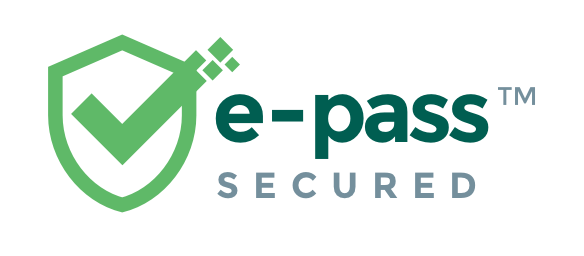Fill This Form To Receive Instant Help
Fill This Form To Receive Instant Help
Homework answers / question archive / 1
1
. From your own point of view, please explain what is bank reconciliation and what the use for it What are the intangible asset? how many different kinds of them compared to tangible assets. .
2
list &explain any 4 assumption of linear programming
3
Assets Cash and due from banks Investment securities Repurchase agreements Loans Fixed assets Other assets Balance Sheet (in millions) Llabilities and Equity $ 9,600 Demand deposits 29,000 NOW accounts 48,000 Retail CDs 96,000 Debentures 21,000 Total liabilities 4,600 Common stock Pald-in capital Retained earnings $208,200 Total liabilities and equity $ 25,000 95,000 34,000 25,000 $179.000 12,000 4,000 13,200 $208,200 Total assets Income Statement Interest on fees and loans Interest on investment securities Interest on repurchase agreements Interest on deposits in banks Total interest income Interest on deposits Interest on debentures Total interest expense Net interest income Provision for loan losses Noninterest income Noninterest expenses Income before taxes Taxes Net income $ 9,600 4,600 6,600 1,600 $22.400 $ 9,600 2,600 $12,200 $10,200 2,600 2,600 1,600 $ 8,600 3,500 $ 5,100 Given the above financial information (all in millions), calculate one of the bank's liquidity risk measures Show your calculation steps in the below box and explain the meaning of the ratio you calculated. BI UWE - A. BE -

1 a)BANK RECONCILIATION STATEMENT
Bank reconciliation statement is a statement which reconciles the bank balance as per cash book with the balance as per pass book by showing all causes of difference between two. There should be no difference between the balance shown by the pass-book and cash-book, if all the entries are recorded in both. However, on a particular date it is possible that balances on both the books do not tally, i.e. some entries may have been recorded in cash-book but not in pass-book and vise-versa.
After finding the reasons for non-agreement of balances, efforts are made for their reconciliation. This reconciliation prepaired and presented in the form of a statement which is called Bank Reconciliation Statement.
USES OF BRS
1) The bank reconciliation statement brings in a comparison between cash book and bank statement, allowing for items in transit.
2) Non agreement of two adjusted balances indicates an error which can be corrected by BRS.
3) Agreement of two adjusted balances provides completeness of cash-book.
4) When cash-book is updated and corrected, the organisation has an amended and correct figure of the bank balance which is to be shown in the trial balance and balance sheet..
5) The bank statement is an independent accounting record therefore it will assist in determining fraud by providing means of varifing the cash book.
6) A trial balance difference may have indicated an error somewhere in accounting system, the same amount showing up, as a bank reconciliation difference indicates that any search for an error can be restricted to the bank accounting system.
INTANGIBLE ASSET
Intangible asset is that which is not having physical existence or it is an asset that is not physical in nature. Goodwill,brand recognition and intellectual property such as patents ,trademark and copyrights are all intangiable asset.An intangible asset can be classified as either definite or indefinite .A company,s brand name is considered as an indefinite intangiable asset because it stays with the company for as long as it continues the operation.
Definite intangible aset include a legal agreement ,with no plans of extending the agreement. The agreement thus has a limited life and is classified as a definite intangible asset.
The classification of tangible and intangible assets are as follows:
| tangible asset |
intangible asset |
|
|
|
patent,copy right,trademark,industrial design ,trade secret. |
|
|
|
2
For example, if there are 5 units of the product, then the contribution would be Rs 100 and in the case of 10 units, it would be Rs 200. Thus, if the output (sales) is doubled, the profit would also be doubled.
For example, If 52/3 units of product A and 101/3 units of product B to be produced in a week. In this case, the fractional amount of production will be taken as a work-in-progress and the remaining production part is taken in the following week. Therefore, a production of 17 units of product A and 31 units of product B over a three-week period implies 52/3 units of product A and 101/3 units of product B per week.
3
Return on Equity = Net Income / Share Holders Fund = 5100/ (12000 + 4000 + 13200) = 0.17
Return on assets = Net Income / Total Asset = 5100 / 208200 = 0.02
Interest Expense Ratio= Interest Expense / (Interest Income + Interest on debentures) = 12200 /(22400+2600) =48.8%
Profit Margin = Net Income / (Interest Income + Interest on Debentires) = 5100 / (22400 + 2600) = 20.4%
Equity Multiplier = Total Asset / Share Holder fund = 208200 / (12000 + 4000 + 13200 ) = 7.13
Asset Utilization = (Interest Income + Interest on debentures) / Total assets = (22400 + 2600) / 208200 = 0.12
Return on equity measuring profitability to equity of the business. Retun\rn on asset indicate profitability measuring with Assets. Interset expense ratio indicate paymnet of interest expense on remaining debt.

